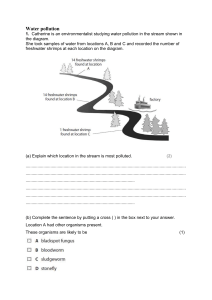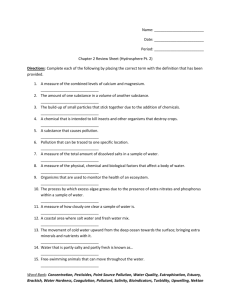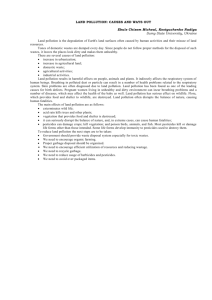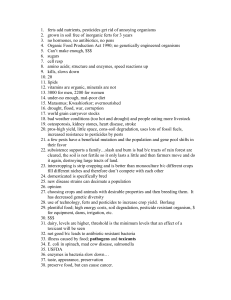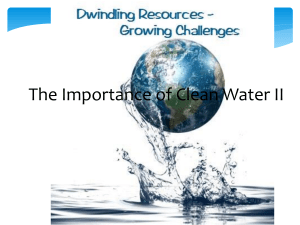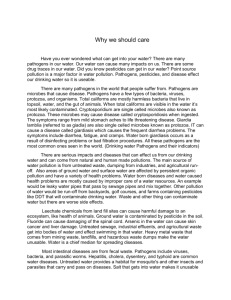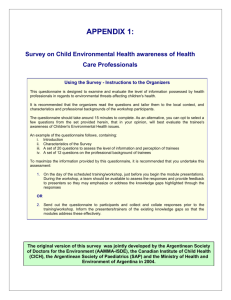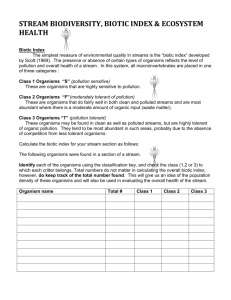The Environment and Human Health
advertisement
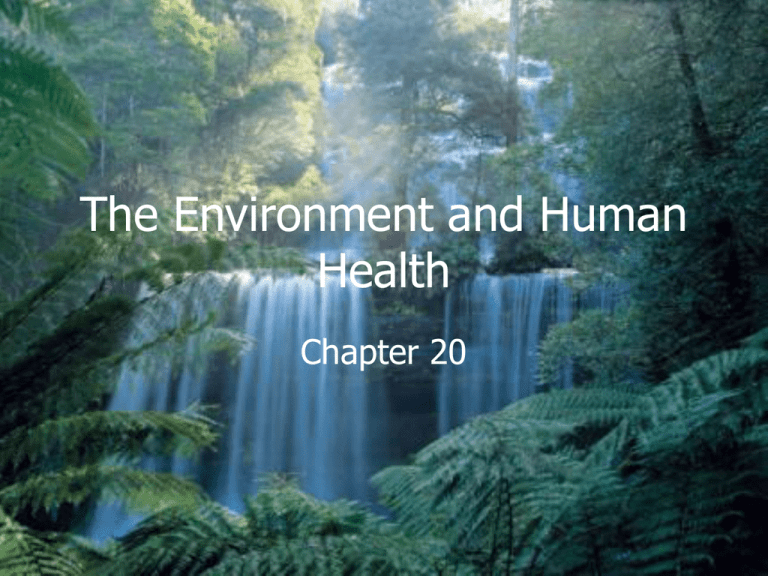
The Environment and Human Health Chapter 20 I. Pollution and Human Health A. Environmental Effects on Health 1. Pollution causes illness in two many ways. a. Pollution may cause illness directly by poisoning (lead poisoning) b. Pollution may cause illnesses indirectly (contaminated water) 2. The World Health Organization (WHO) has been researching environmental affects on human health. 3. People in developed countries suffer less from environmental causes of poor health. 4. In developing countries environmental causes of poor health is largely due to polluted water and insect borne disease. B.Toxicology is the study of the harmful effects of substances on organisms. 1. We are exposed to small amounts of chemicals every day in food, in the air we breathe and some water we drink. 2. The amount of a harmful chemical to which a person is exposed is called the dose. 3. The damage to health that results from exposure to a given dose is called the response. 4. A persistent chemical is a chemical that breaks down slowly in the environmentexample DDT 5. The toxicity of a chemical can be expressed as a doseresponse curve. 6. Sometimes there is a threshold dose. C. Epidemiology is the study of the spread of diseases. 1. A risk assessment is an estimate of the risk posed by an action or substance. 2. Risk is the probability of a negative outcome. D. Pollution from Natural Sources 1. Some pollutants occur naturally in nature. 2. Radon poisoning causes 15,000-22,000 cancer deaths a year in the US. E. Pesticides 1. Chemicals designed to kill unwanted organisms such as insects, fungi or weeds. 2. Pesticides are designed to kill organisms, they are often dangerous to humans in large enough doses. 3. We are exposed to low levels of industrial chemicals every ay, particularly inside new buildings. 4. PCB’s have been used for years as insulation in eletrical tranformers. 5. Children exposed to PCB’s can have learning problems, and low IQ’s. 3. Widely used organophosphate pesticides have replaced more persistent pesticides. 4. Organophosphates are very toxic, causing nerve damage and perhaps cancer. 5. Such pesticides are dangerous to children whose internal organs are still developing. F. Waste Disposal 1. Most of our pollution is because of inadequate waste disposal. 2. Many old landfills are leaking. 3. Sewage treatment plants release raw sewage into a river or the ocean after heavy rains. II. Biological Hazards A. The environment’s Role in Disease 1. Infectious diseases are caused by pathogens. 2. A host is an organisms in which a pathogen lives all or part of its life. B. Waterborne Disease 1. Nearly ¾ of infectious diseases are transmitted through wqater. 2. Organisms that transmit the disease are called vectors. (mosquitos) 3. The deadliest waterborne disease comes from drinking water polluted by human feces. 4. Cholera and dysentery. 5. Malaria was once the world’s leading cause of death. C. Environmetnal Change and Disease 1. We have polluted the environment and by doing that we have made it more suitable for pathogens to live and to reproduce. 2. Example- hookworms has increased dur to contaminated soil. 3. Over use of antibiotics have causes resistance. 4. Some strains of Salmonella, E.Coli, and TB are resistant to antibiotics. 5. Malaria on the march. 6. Emerging viruses. 7. Cross-specie transfers-bird flu. THE END
